NPs Basic Information
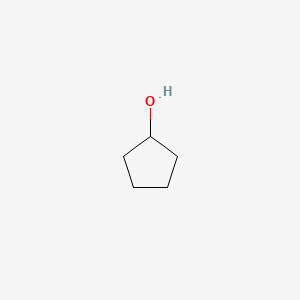
|
Name |
Cyclopentanol
|
| Molecular Formula | C5H10O | |
| IUPAC Name* |
cyclopentanol
|
|
| SMILES |
C1CCC(C1)O
|
|
| InChI |
InChI=1S/C5H10O/c6-5-3-1-2-4-5/h5-6H,1-4H2
|
|
| InChIKey |
XCIXKGXIYUWCLL-UHFFFAOYSA-N
|
|
| Synonyms |
CYCLOPENTANOL; 96-41-3; Cyclopentyl alcohol; Hydroxycyclopentane; 1-cyclopentanol; MFCD00001363; UN2244; 1L43Q07TBU; CHEBI:16133; NSC-49117; DSSTox_CID_13371; DSSTox_RID_79066; DSSTox_GSID_33371; CAS-96-41-3; HSDB 2821; EINECS 202-504-8; NSC 49117; cydopentanol; UNII-1L43Q07TBU; AI3-25264; YEG; 1-cyclopentyl alcohol; Cyclopentanol, 99%; CYCLOPENTANOL [MI]; EC 202-504-8; MLS001055338; CHEMBL288998; DTXSID1033371; BDBM36176; AMY3616; Cyclopentanol, analytical standard; HMS3039M14; ZINC901228; BCP30892; NSC49117; STR07441; Tox21_200109; Tox21_303563; STL280357; AKOS000118901; CS-W004073; UN 2244; UN-2244; NCGC00091006-01; NCGC00091006-02; NCGC00257249-01; NCGC00257663-01; SMR000673565; FT-0624257; FT-0624258; Cyclopentanol [UN2244] [Flammable liquid]; EN300-19348; C02020; A845587; Q284201; Hydroxycyclopentane;Cyclopentyl alcohol;1-Cyclopentanol; F0001-2295
|
|
| CAS | 96-41-3 | |
| PubChem CID | 7298 | |
| ChEMBL ID | CHEMBL288998 |
*Note: the IUPAC Name was collected from PubChem.
Chemical Classification: |
|
|
|---|
——————————————————————————————————————————
NPs Species Source
| Endophyte ID | Endophyte Name | Family | Genus | Taxonomy ID | GenBank ID | Closest GenBank ID | Reference | |
|---|---|---|---|---|---|---|---|---|
| Endophyte ID | Endophyte Name | Family | Genus | Taxonomy ID | GenBank ID | Closest GenBank ID | Reference |
NPs Biological Activity
| Bioactivity Name | Target ID | Target Name | Target Type | Target Organism | Target Organism ID | Potency of Bioactivity | Activity Type | Value | Unit | Endophyte ID | Endophyte Name | |
|---|---|---|---|---|---|---|---|---|---|---|---|---|
| Bioactivity Name | Target ID | Target Name | Target Type | Target Organism | Target Organism ID | Potency of Bioactivity | Activity Type | Value | Unit | Endophyte ID | Endophyte Name |
NPs Physi-Chem Properties
| Molecular Weight: | 86.13 | ALogp: | 0.8 |
| HBD: | 1 | HBA: | 1 |
| Rotatable Bonds: | 0 | Lipinski's rule of five: | Accepted |
| Polar Surface Area: | 20.2 | Aromatic Rings: | 1 |
| Heavy Atoms: | 6 | QED Weighted: | 0.471 |
——————————————————————————————————————————
NPs ADMET Properties*
ADMET: Absorption
| Caco-2 Permeability: | -4.303 | MDCK Permeability: | 0.00005440 |
| Pgp-inhibitor: | 0 | Pgp-substrate: | 0.748 |
| Human Intestinal Absorption (HIA): | 0.012 | 20% Bioavailability (F20%): | 0.019 |
| 30% Bioavailability (F30%): | 0.679 |
——————————————————————————————————————————
ADMET: Distribution
| Blood-Brain-Barrier Penetration (BBB): | 0.879 | Plasma Protein Binding (PPB): | 26.44% |
| Volume Distribution (VD): | 1.248 | Fu: | 66.02% |
——————————————————————————————————————————
ADMET: Metabolism
| CYP1A2-inhibitor: | 0.19 | CYP1A2-substrate: | 0.778 |
| CYP2C19-inhibitor: | 0.047 | CYP2C19-substrate: | 0.398 |
| CYP2C9-inhibitor: | 0.019 | CYP2C9-substrate: | 0.584 |
| CYP2D6-inhibitor: | 0.006 | CYP2D6-substrate: | 0.411 |
| CYP3A4-inhibitor: | 0.01 | CYP3A4-substrate: | 0.151 |
——————————————————————————————————————————
ADMET: Excretion
| Clearance (CL): | 10.9 | Half-life (T1/2): | 0.7 |
——————————————————————————————————————————
ADMET: Toxicity
| hERG Blockers: | 0.021 | Human Hepatotoxicity (H-HT): | 0.079 |
| Drug-inuced Liver Injury (DILI): | 0.034 | AMES Toxicity: | 0.014 |
| Rat Oral Acute Toxicity: | 0.047 | Maximum Recommended Daily Dose: | 0.031 |
| Skin Sensitization: | 0.476 | Carcinogencity: | 0.371 |
| Eye Corrosion: | 0.962 | Eye Irritation: | 0.994 |
| Respiratory Toxicity: | 0.115 |
——————————————————————————————————————————
*Note: the ADMET properties was calculated by ADMETlab 2.0. Reference: PMID: 33893803.
Similar Compounds*
Compounds similar to EMNPD with top10 similarity:
| Similar NPs | Similar Drugs | ||||||
|---|---|---|---|---|---|---|---|
| NPs ID | NPs 2D Structure | Similarity Score | TTD ID | Drug 2D Structure | Similarity Score | ||
| ENC000840 | 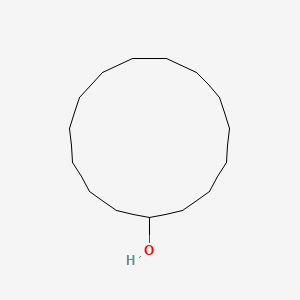 |
0.362 | D03DVJ | 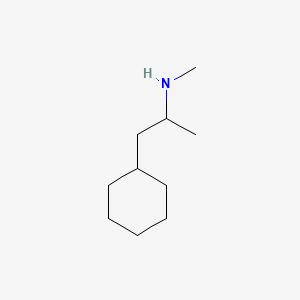 |
0.297 | ||
| ENC001169 |  |
0.333 | D04URO | 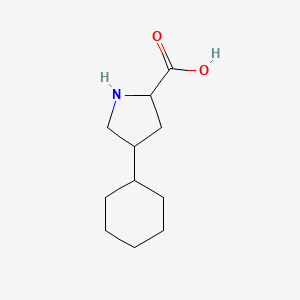 |
0.267 | ||
| ENC000492 |  |
0.324 | D0Y3ME | 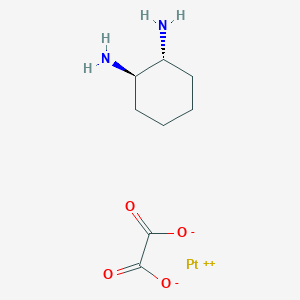 |
0.262 | ||
| ENC001261 | 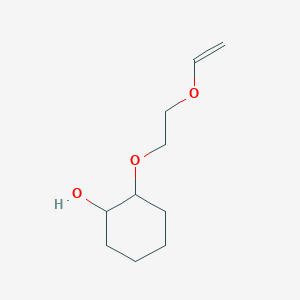 |
0.317 | D07GRH | 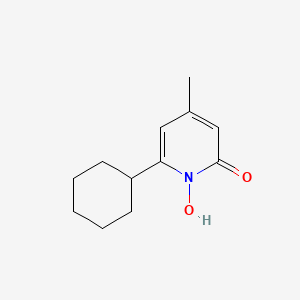 |
0.255 | ||
| ENC004377 | 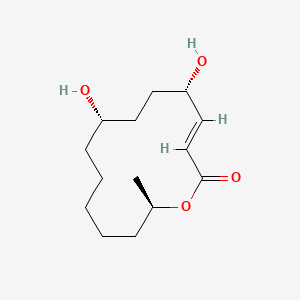 |
0.314 | D0N4PZ | 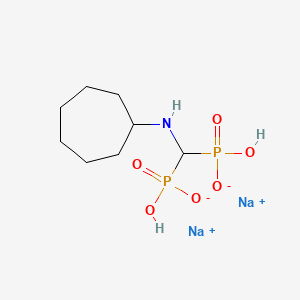 |
0.231 | ||
| ENC003404 | 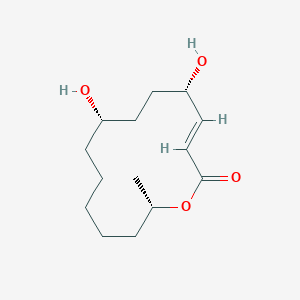 |
0.314 | D04JPJ | 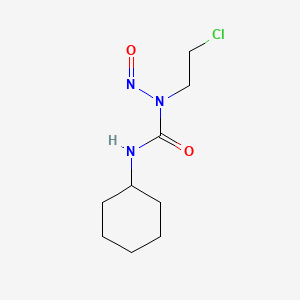 |
0.229 | ||
| ENC000644 | 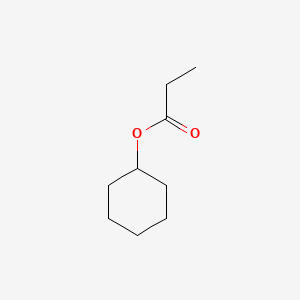 |
0.297 | D0DZ3X | 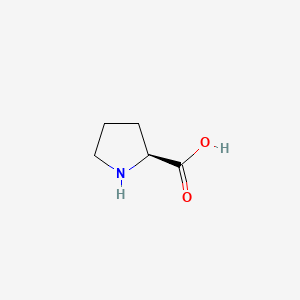 |
0.219 | ||
| ENC000885 | 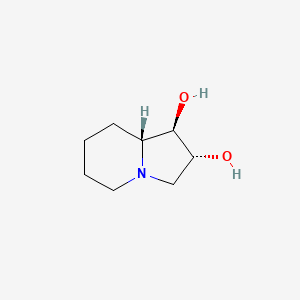 |
0.297 | D04CSZ | 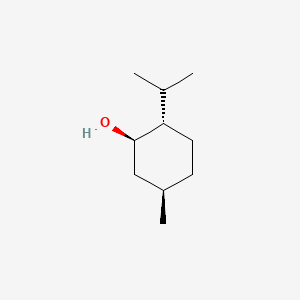 |
0.211 | ||
| ENC004080 | 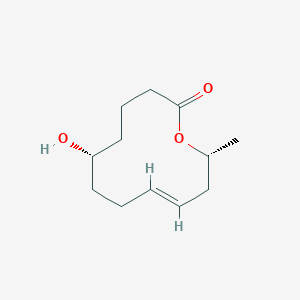 |
0.283 | D05HXX | 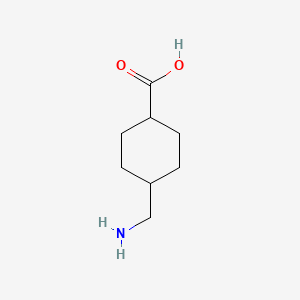 |
0.205 | ||
| ENC004081 | 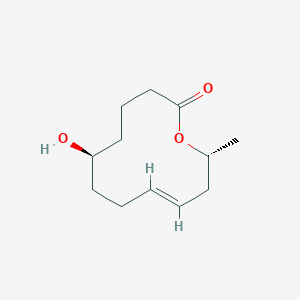 |
0.283 | D03DSR | 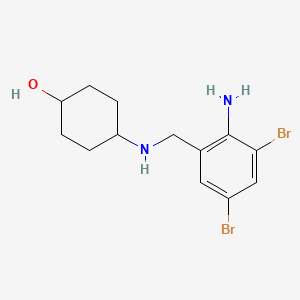 |
0.196 | ||